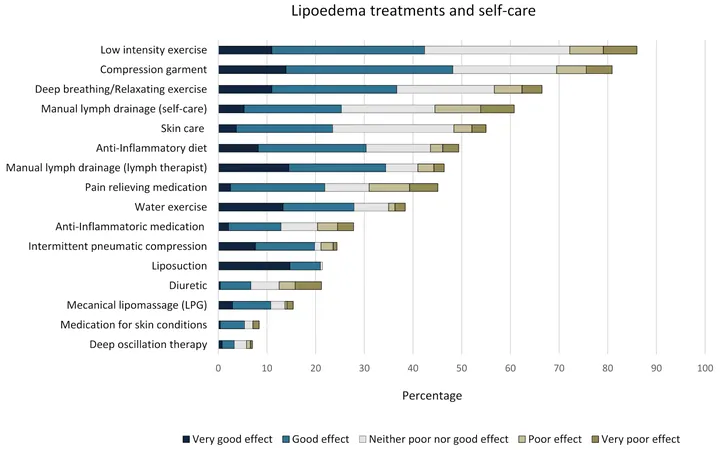
Uncovering Lipoedema: The Untold Struggles of Women Seeking Care
2025-04-11
Author: Siti
Understanding Lipoedema: A Hidden Challenge for Women
Lipoedema, a painful condition predominantly affecting women, causes abnormal fat accumulation in the lower body, arms, and sometimes extends to the thighs and buttocks. This disease often emerges during major hormonal changes, including puberty, pregnancy, and menopause, but sadly, awareness of lipoedema remains low, leading to frequent misdiagnoses and poor treatment options.
The Physical and Emotional Toll
Characterized by swollen, painful nodules of fat and symptoms like easy bruising and heaviness, lipoedema severely impacts the quality of life. A significant percentage of patients face limitations in daily activities, leading to feelings of frustration and despair as their condition worsens.
Classifying Lipoedema's Types and Stages
Lipoedema is classified into five types based on its anatomical location, with varying stages indicating the severity of the condition. From regular skin with enlarged fat tissue to severe tissue deformities, the symptoms progress over time, making diagnosis and management crucial.
A Lack of Effective Treatment Options
Currently, there's no known cure for lipoedema, and treatment guidelines are scarce. Although many women engage in self-care practices—including physical exercise, dietary management, and the use of compression garments—these often yield mixed results. Traditional weight loss tactics are generally ineffective, yet maintaining a healthy lifestyle is vital to mitigate obesity-related risks.
The Importance of Patient-Centered Care
Engaging patients in their treatment plans empowers them and can significantly improve care outcomes. Women with lipoedema deserve to be seen as equal partners in their healthcare experiences, echoing the need for a person-centered approach that fosters better communication and satisfaction.
Barriers to Quality Healthcare
A recent study has highlighted the distressing experiences of women seeking care for lipoedema. Many report feeling unheard, misunderstood, and stigmatized by healthcare providers, raising pressing concerns about the quality of care they receive. Women often find themselves navigating a fragmented healthcare system with little guidance or support.
A Call for Better Awareness and Education
The research signals a critical need for heightened awareness and education around lipoedema among healthcare professionals. Many women have endured years of misdiagnoses and ineffective treatments, further emphasizing the importance of a holistic, interdisciplinary approach to care.
Resolving the Knowledge Gap in Healthcare
Women consistently report gaps in knowledge among healthcare providers, leading to confusion and frustration regarding their treatment options. To provide equitable care, healthcare professionals must be educated about lipoedema, allowing them to better address patients' needs.
Towards Inclusive Research and Global Collaboration
Future research should explore the psychosocial impacts of living with lipoedema and include diverse populations across different countries. To better support those affected, international collaboration and shared knowledge are essential.
Conclusion: A Path Forward for Women with Lipoedema
The journey for women with lipoedema is marked by challenges that need urgent attention. By fostering better communication, educating healthcare providers, and creating comprehensive care plans, we can improve the management of this hidden women's disease and enhance the quality of life for those affected.



 Brasil (PT)
Brasil (PT)
 Canada (EN)
Canada (EN)
 Chile (ES)
Chile (ES)
 Česko (CS)
Česko (CS)
 대한민국 (KO)
대한민국 (KO)
 España (ES)
España (ES)
 France (FR)
France (FR)
 Hong Kong (EN)
Hong Kong (EN)
 Italia (IT)
Italia (IT)
 日本 (JA)
日本 (JA)
 Magyarország (HU)
Magyarország (HU)
 Norge (NO)
Norge (NO)
 Polska (PL)
Polska (PL)
 Schweiz (DE)
Schweiz (DE)
 Singapore (EN)
Singapore (EN)
 Sverige (SV)
Sverige (SV)
 Suomi (FI)
Suomi (FI)
 Türkiye (TR)
Türkiye (TR)
 الإمارات العربية المتحدة (AR)
الإمارات العربية المتحدة (AR)